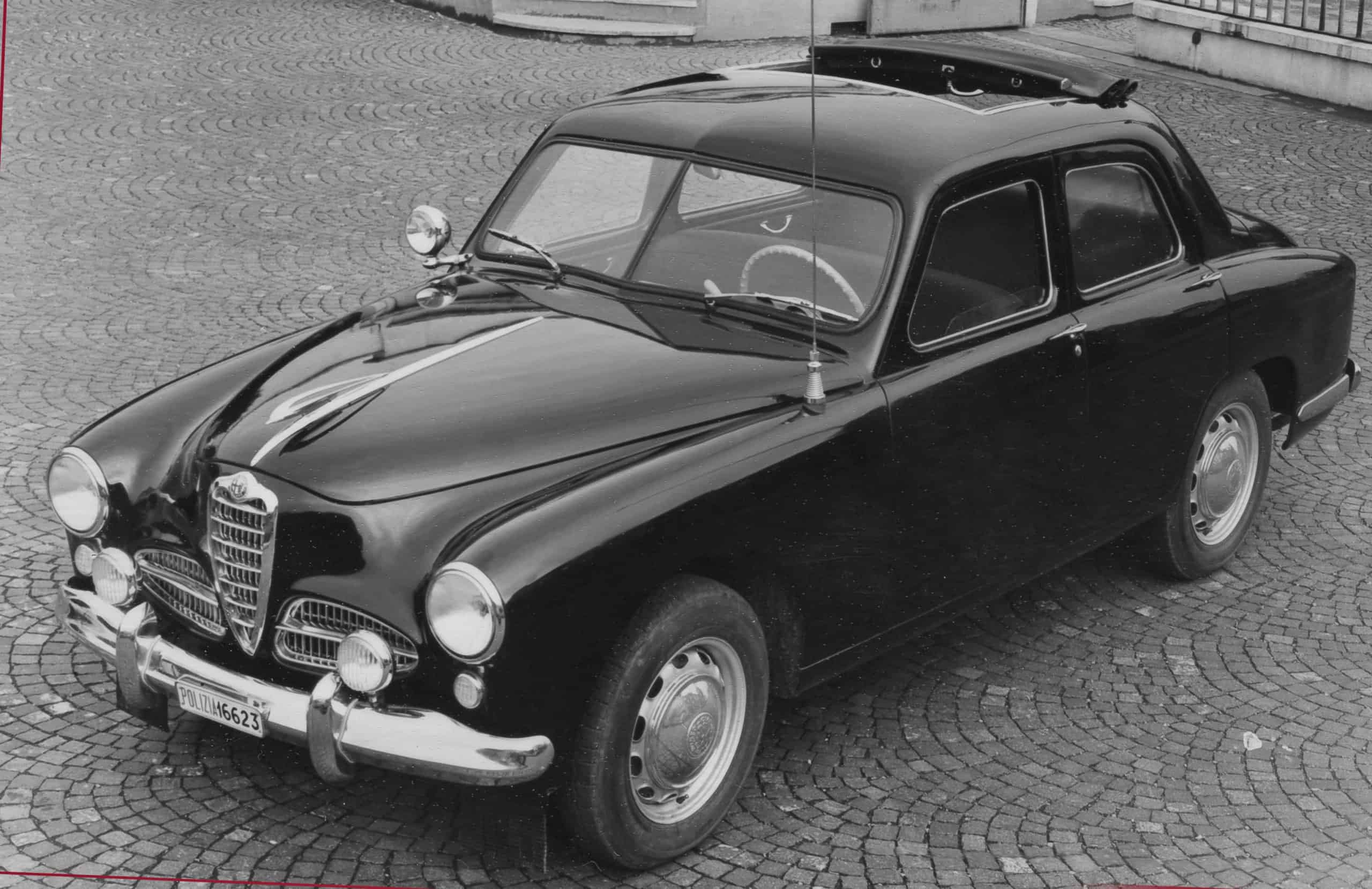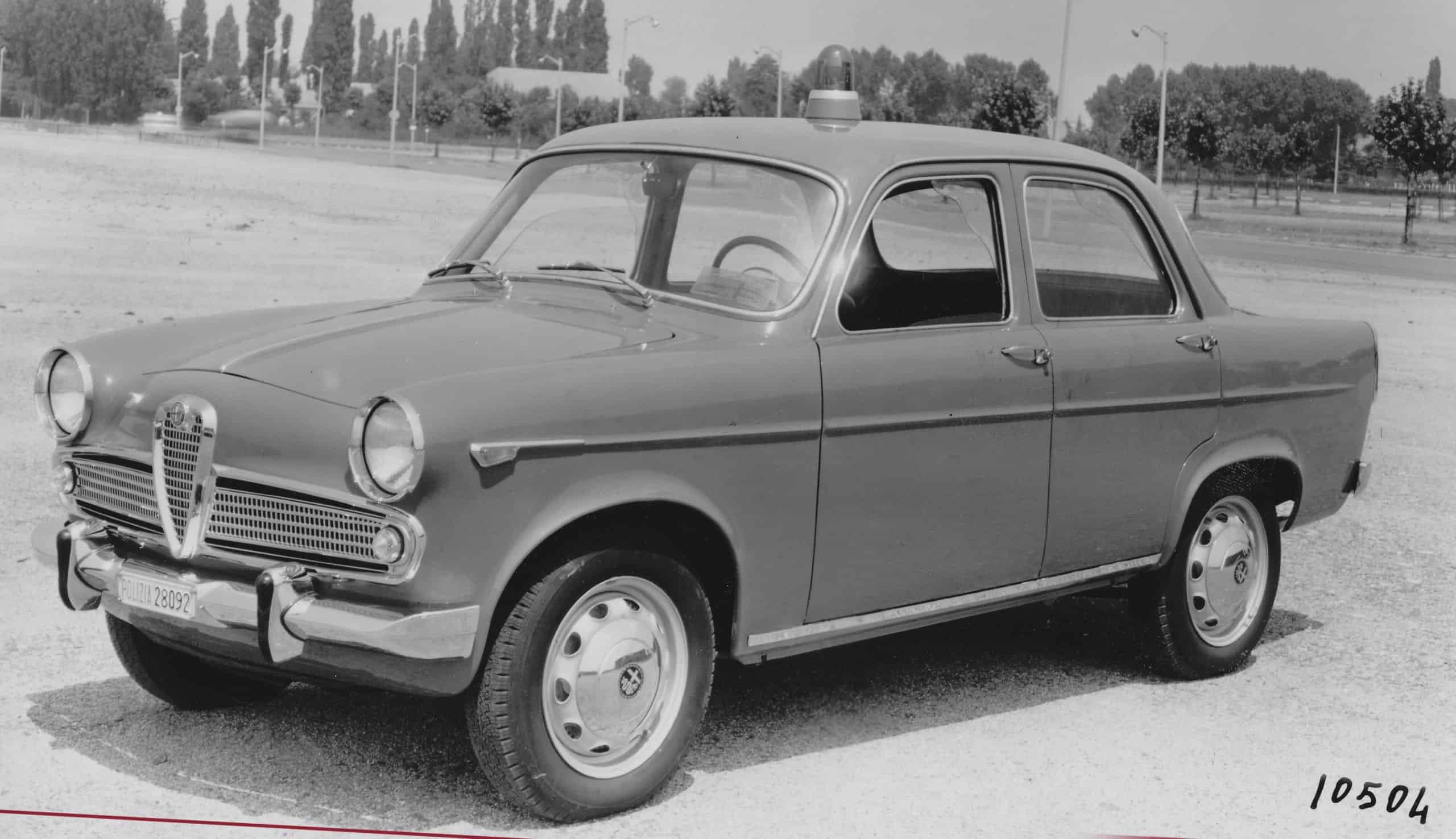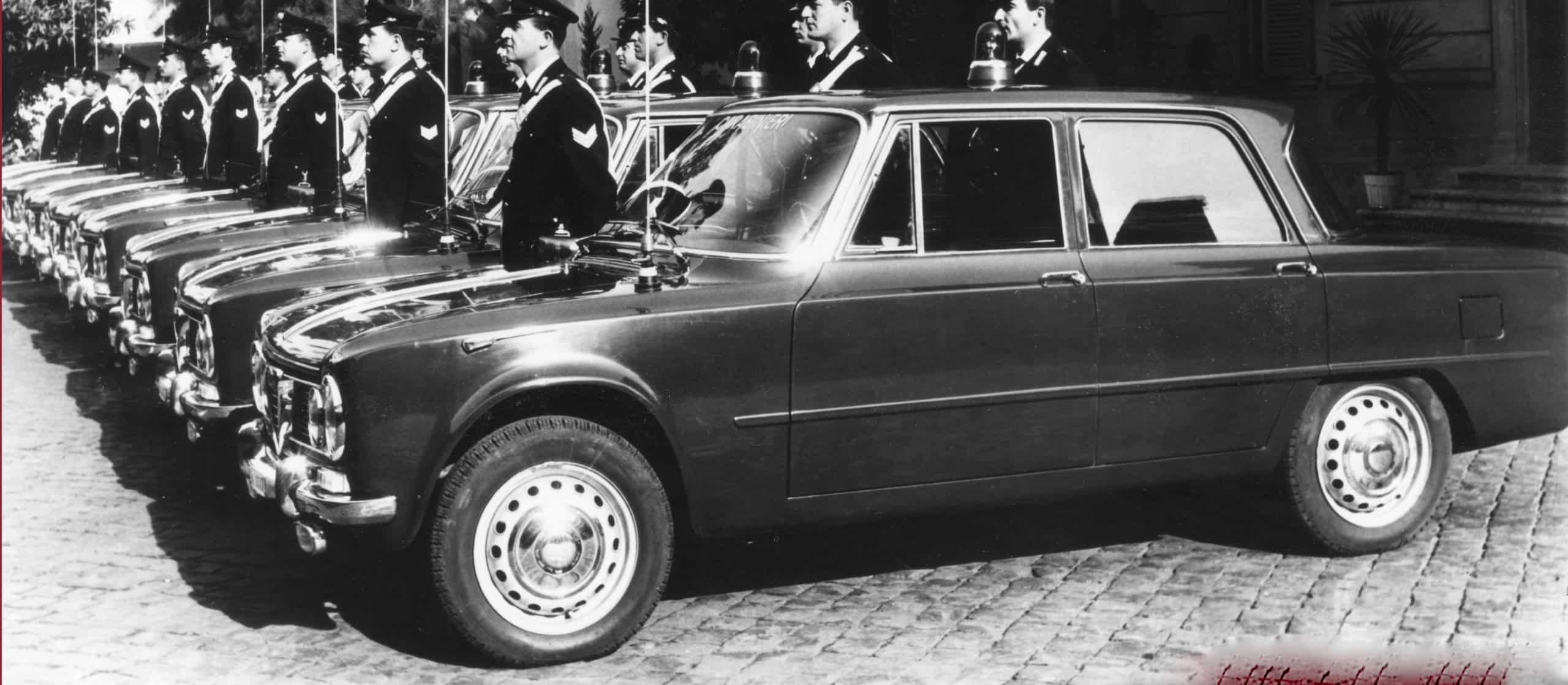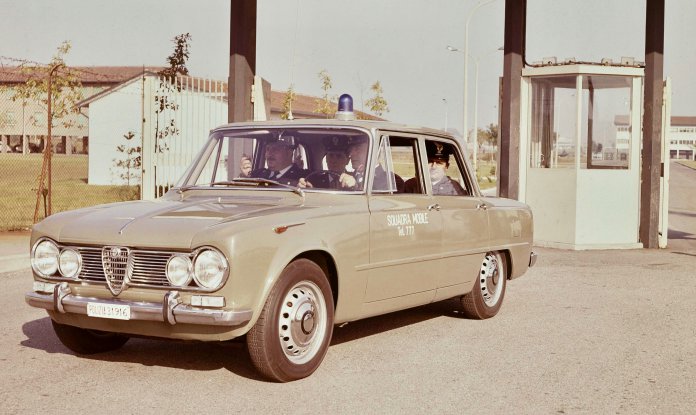(Editor’s note: As Alfa Romeo celebrates its 110th anniversary, it is exploring its archives for highlights of its history. Today’s installment is about its “Gazelles” and “Panthers,” the cars it produced that were used by Italian police forces.)
Among cars designed for regular driving, as opposed to all-out sports cars, the fastest vehicles being produced in post-war Italy were rolling off Alfa Romeo assembly lines. Alfas were quick on the highways, were winning on the race track (including in the United States), and they were pressed into service as police cars.
Those used by the Italian state police were nicknamed “Panthers” while those used by the Carabinieri, or military police, were termed “Gazelles.”
“The very first Panther was an Alfa Romeo 1900 built in 1952; its aggressive silhouette inspired its name,” Alfa Romeo recalls in its news release.
“The first Gazelle came into use a few years later. The most famous police car of all was the Giulia Super, but the police used many other Alfa Romeo models, from the Matta to the Alfasud, Alfa 75, Alfetta, 156 and the current Giulia in use today.”

Alfa says its history with the police traces to Orazio Satta Puliga, born in Turin but of Sardinian ancestry. Puglia became Alfa’s director of design in 1946, though one of his first duties was to restructure the Alfa production process; instead of producing every part at its own Portello factory, he pushed for outsourcing many components. That saved money, money that could be invested in his vision for new vehicles, vehicles seen as “a kind of affliction, the enthusiasm for a means of transport.”
Pulgia’s Alfa 1900 of 1950 was the first Alfa with left-hand drive and the first with unibody construction. Rather than the traditional 6- or 8-cylinder engine, it had a new 4-cylinder powerplant, with dual camshafts and an aluminum cylinder head.
“It was agile and fast, just as you would expect from an Alfa Romeo,” the company proclaims, “but also very easy to drive. It was designed to target a bigger market with the launch slogan: ‘The family car that wins races’.”
The 1900 also was the first Alfa built not on an artisan/craftsman basis but on a true assembly line, and thus instead of 240 hours, each car was produced in just 100.
“This new approach led to an unprecedented success in terms of sales,” Alfa notes. “The 1900 alone sold more than the total Alfa Romeo production of other vehicles up until that time.”
Several variants also were produced, such as the 1900 TI, 1900 C Sprint and Super Sprint, and the 1900 Super. Alfa also worked with Bertone and designer Franco Scaglione to create the B.A.T. concept cars. There was even the AR51, a 4×4 off-roader for the Italian Armed Forces.

The next big step for Alfa was the Giulietta and an even larger-scale assembly plant. The key figure was Giuseppe Luraghi, a native of Milan and former manager at tire maker Pirelli. From 1951-1958, Luraghi was general manager of Finmeccanica, the holding company that controlled Alfa Romeo. He left briefly, but returned in 1960 as Alfa president, a title he held until 1974.
Although he enjoyed boxing as a participant, he also was involved in promoting cultural activities and in 1953 appointed Leonardo Sinisgalli, “the poet engineer” to create a magazine — La Civilita della Macchine (The Civilization of Machines) that would establish a dialog between humanist culture, technical knowledge and art, and would feature the work of leading Italian writers.
Luraghi also expanded Alfa production and produced the Giulia.
“The Giulia was the product of this turning point in the history of Alfa Romeo,” the company said, “a car designed to boost sales but at the same time confirm the brand’s technical tradition and sporting vocation.”
One of those Giuliettas became the first Gazelle, used for patrol by the Carabinieri.
“Shorter, narrower and lighter than the 1900, Giulietta took Alfa Romeo into a new segment, for a new public,” the company reports. “It offered a modern, streamlined exterior and maximum comfort on the inside, as well as exceptional road holding, quick starting and speed. Its engine (entirely in aluminum) delivered 65 horsepower, racking up a maximum speed of 102.5mph.”
Next it was Satta Puliga’s turn.

“Only a revolutionary vehicle could knock Giulietta off the top spot,” the company said. So Puliga and his team “set to work, developing a vehicle that was definitely way ahead of its time.”
That vehicle was the Giulia, one of the first cars with front and rear designed to be shock-absorbent and with an extremely rigid passenger compartment for protection of its occupants. The Giulia had more aerodynamic styling and a 1.6-liter twin-cam 4-cylinder engine with sodium-cooled exhaust valves.
Giulia can be seen racing around in many cop movies of the era.

“Visitors to the Alfa Romeo Museum in Arese will find a room dedicated to Alfa Romeo in the world of film,” Alfa adds. “It hosts many appearances by illustrious vehicles, but Giulia is the undisputed star of the show, featuring in the many ‘poliziotteschi’ films made during that period.”
Such films, it notes, “started out as ‘B-movies,’ and later became cult films. In these movies where ‘cops and robbers’ clash, Giulia often stars as both the police car and the getaway vehicle.”





